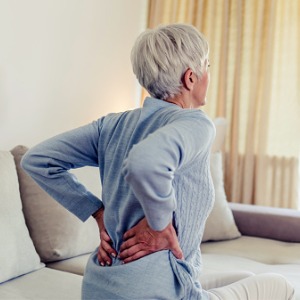Common Causes of SI Joint Dysfunction
The sacroiliac joint, known as the SI joint, is located between the adjacent surfaces of the sacrum and ilium, in the pelvis. It is a site of significant motion during walking and running and also bears weight from the upper body. The SI joint plays a crucial role in mobility, stability, and resistance against forces, but it becomes increasingly limited with cartilaginous changes that start in puberty and continue throughout life.

SI joint dysfunction is a condition where the SI joint that connects the spine to the pelvis becomes irritated and inflamed. This condition typically causes pain when there is an injury or sudden change in activity levels, and the pain is most often located in the lower back and legs. It is estimated that SI joint dysfunction is responsible for 15% to 30% of lower back pain causes.
Symptoms of SI Joint Dysfunction
The most common symptom is sharp shooting pain in your buttocks when you sit down or stand up. Other symptoms may include muscle spasms and clicking from the joint when it moves, or when there is pressure put on your hips. Some other symptoms include:
- Pain in the lower back
- Pain in the hips and pelvis
- Pain in the groin
- Stiffness or a burning sensation in the pelvis
- Numbness
- Pain radiating down into your thighs and upper legs
- Feeling as though your legs may buckle
- Weakness
If you’re not sure if this is what is causing your pain, ask your doctor for an evaluation.
Causes of SI Joint Dysfunction
There are many causes of SI joint dysfunction, including injury to the SI joint. One way that an SI joint injury can happen is from a forceful extension of the spine. This can cause ligaments in the area to snap, leading to chronic pain and stiffness. Medical providers may see an increase in SI joint dysfunction in patients where increased stress from more weight has been put on their sacroiliac joint.
Scoliosis
When one has scoliosis, an abnormal curvature of the spine, their spinal column may curve to the side, leading to a pinching or compression of the SI joints.
Pregnancy
Pregnancy can cause SI joint dysfunction by making the pelvic joint more elastic, which reduces stability. The increased weight of the baby, combined with the effects of hormones relaxin and progesterone, can lead to SI joint pain. Women who experience this are more likely to get arthritis in their SI joint, a risk that increases with each pregnancy.
Injury
Trauma to the SI joint can result in damage of the cartilage and bone, which causes pain in the lower back or legs.
Obesity
Obesity is one of the leading causes of SI joint dysfunction as the increased weight can strain the joints, leading to pain and discomfort. Also, the additional exertion on the muscles in the abdomen causes the muscles to shorten over time, which decreases support for the spinal column and pelvis.
Osteoarthritis
Osteoarthritis is a type of inflammatory arthritis that primarily affects the joints and SI joints in the spine. It is associated with aging, which leads to the decrease in stability and cartilage. The pain from osteoarthritis may be caused by inflammation or bone growth that fuses the joints.
SI Joint Dysfunction Treatment
Some treatments for SI joint dysfunction include:
Physical Therapy
Physical therapy is a form of treatment that can be done at home or in a clinic. It may include exercises for stretching your hips and back muscles, and strengthening exercises for your core muscles. In more severe cases of SI joint problems, it may be recommended that you use crutches or walkers to avoid putting pressure on the inflamed joint, which will reduce pain and prevent further damage while it heals.
Medications
Medications such as corticosteroids may be prescribed to help decrease inflammation in the SI joints.
Lifestyle Changes
Lifestyle changes such as weight loss and activity modification can relieve pressure on your SI joints.
Contact PainTEQ
If you are experiencing low back pain or SI joint dysfunction, contact PainTEQ today to see if you are a candidate for our LinQ joint stabilization procedure, which has provided many patients with immediate relief for their low back pain.



